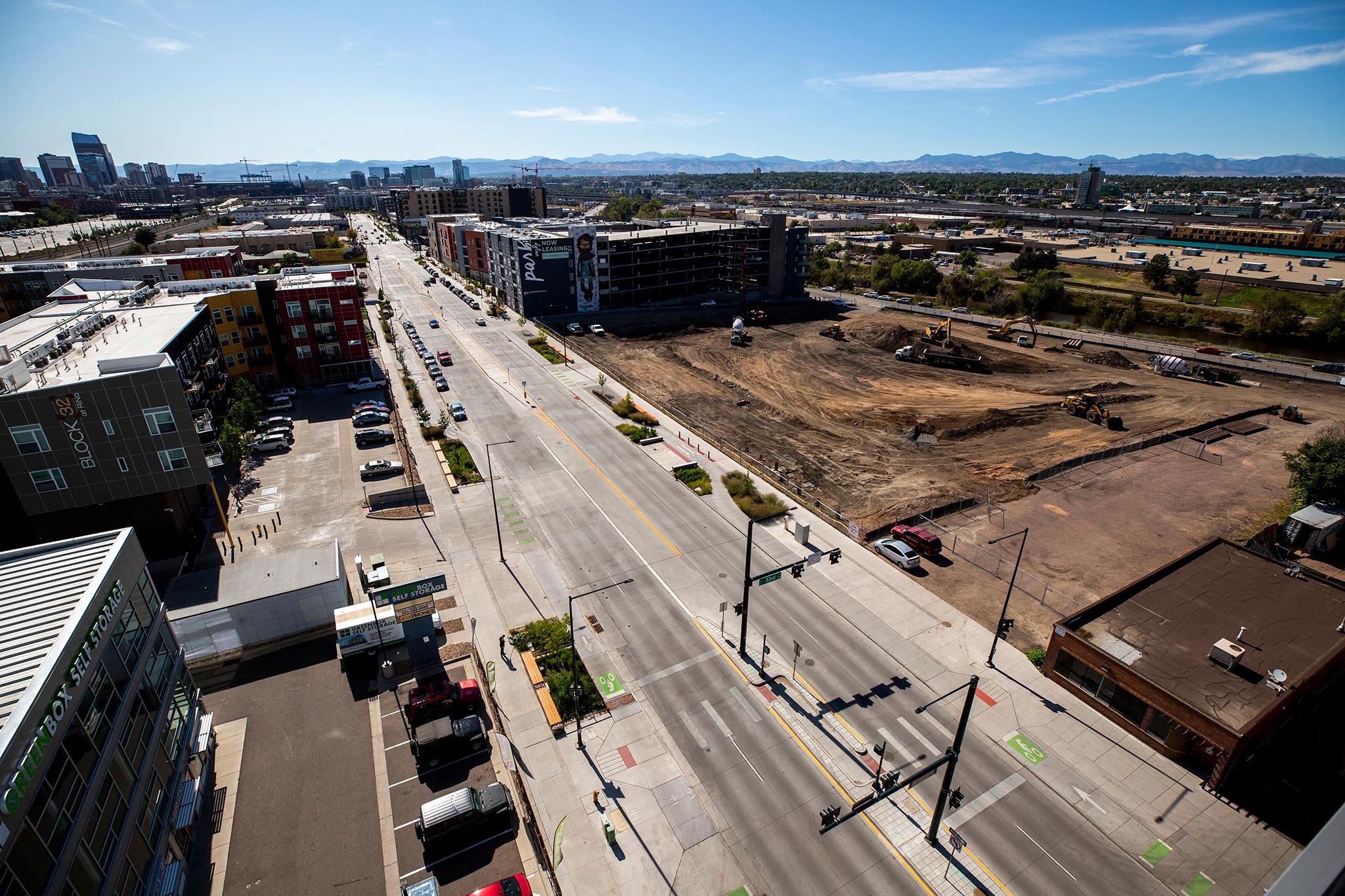Before the Brighton Boulevard corridor became an epicenter for Denver redevelopment, it was almost declared blighted.
Back in April 2015, the Denver Urban Renewal Authority (DURA) commissioned a study of the corridor between 29th Street and Interstate 70, including portions of Denargo Street. DURA executive director Tracy M. Huggins said this happened after developers of The Source, Zeppelin Development, requested a new urban renewal area for a new hotel (a successful project that ended with The Source Hotel). DURA oversaw the study, which was conducted by a third party, to determine whether this area was blighted.
Now, to back up a bit, as we recently saw in East Colfax, a recommendation for blight designation is made by DURA, whose job is to spark redevelopment of blighted properties. They initially suggest whether an area should be declared blighted.
But a blight designation can only be approved by City Council. Their vote to approve the designation allows for an urban redevelopment area to be established, which in turn opens up new financing options meant to lure development.
So what did DURA find on Brighton? Well, the study concluded that in its condition at the time, the Brighton Boulevard corridor met enough criteria to be declared a blighted. The study found four of the 11 blight factors outlined by state law, including environmental contamination of buildings, which was enough to meet the minimum requirement for a designation.
The findings weren't entirely surprising, given the area's industrial character. But while the study found those blight elements and recommended the council establish an urban redevelopment area, a second, equally critical part was missing. Huggins explained it:
"It came back and said, yes, there are factors of blight but you have building permits being pulled, you have cranes going up -- those blighting factors are not limiting the developability of the area," Huggins said.
Zeppelin Development co-president Kyle Zeppelin said the area where his company would build the Source was initially surrounded by storage, empty lots and vacant buildings in the early 2010s. Zeppelin depicted a rough scene: People were living in some of those lots and common, open drug use.
The formerly dormant stretch is now home to not only The Source and The Source Hotel -- the latter of which was built thanks to the success of the former -- but a roster of dining, nightlife and entertainment spots that make the strip a bigger destination. It's got Will Call, Mister Tuna, Great Divide Barrel Bar and now Mission Ballroom, not to mention the very-near-by Zeppelin Station, Bigsby's Folly, Great Divide Brewery and Blue Moon Brewing Co.
"The Source was widely credited with being highly pioneering and a catalyst for everything that came after it," Zeppelin said.
Both Source projects were funded after the establishment of urban renewal areas, triggering the use of public financing options. The Source was completed in late 2013 and The Source Hotel opened last year.
So even though the area didn't have many sidewalks and there were buildings with serious contamination issues in 2015, Huggins said, the market was dealing with those challenges. It meant that DURA didn't necessarily need to put in those financing options to try and bring in more development, because development was starting to pick up the pace.
"When that happens, we shouldn't be there," Huggins said.













